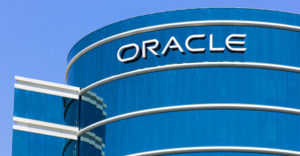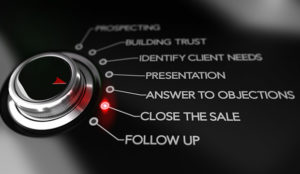
CEOs across companies and industries have become focused in 2008 on the critical role that customer experience plays in keeping their companies competitive and driving profitability. These same CEOs are challenging their CMOs to move beyond CRM (a transactional, inside-out approach) to Customer Experience Management (CEM), which takes an outside-in approach to the customer experience by providing the right touch to the right customer at the right time, every time.
Looking at it from a slightly different perspective, CMOs challenged in a tough economy are asking a simple question: What programs can I put in place that will impact my bottom line in the next 24 months? CEM programs surface quickly to the top of that short list.
Companies implementing CEM programs have found that CEM is not a point-in-time program but a continuous improvement. It is a multi-year journey where people, process, organization, key performance indicators (KPIs) and supporting technology have had to be aligned to provide the appropriate customer experience.
There are many challenges for companies hoping to implement Customer Experience Management: The right executive leadership must be in place, the right change agenda and expectations must be set, the right employees must be empowered, the right action plan must be in place, and the right customer metrics must be in existence. In addition, CMOs and CEOs are expecting that the appropriate supporting technology must also be in place, such as an integrated suite of multi-mode CRM, analytics, contact center, social media applications, enterprise feedback, predictive analytics and wireless capabilities used to provide the technology backbone to empower employees and partners. In many organizations, a new role — “Chief Experience Officer” — has joined the C-level ranks.
Retention, Satisfaction and Profitability
Aberdeen Group found that Best-in-Class adopters of a Customer Experience Management program experienced some significant performance improvements:
- Ninetey percent improvement in year-over-year customer retention
- Eighty-four percent improvement in year-over-year customer satisfaction
- Sixty-eight percent improvement in year-over-year profitability
According to the Aberdeen Group Research Preview, obstacles must be overcome in order to effectively and efficiently implement a Customer Experience Management program. The Aberdeen survey data found that the challenges to implementing an effective Customer Experience Management program involved business process, executive sponsorship, organizational and measurement issues:
- The inability of departments within a company to come to agreement on common, outside-in customer-facing business processes and then to execute these enhanced business procedures;
- Inadequate executive sponsorship of changes bubbled up by the CEM team; anecdotal customer comments indicated having a respected C-level champion and respected D-level line-of-business champions were make-or-break success criteria;
- The inability to come to agreement on a commonly-used set of metrics to drive performance over several years; and
- The inability to measure defined returns from these changes in process over time.
CEM Is a Strategic Differentiator
Best-in-Class strategies for implementing CEM programs are looking to provide a consistent user experience and use customer experience as a strategic differentiator:
- Fifty-five percent are driving to enable a consistent customer experience across customer channels; enabling technology plays a significant role in terms of personalization engines that adapt from prior customer experiences and learn and predict the “next-best” product or answer.
- Fifty-two percent are looking at using customer experience as a strategic differentiator in their strategic go-to-market plan. Just as Best-in-Class companies have invested in state-of-the-art product, distribution, supply chain, branding, marketing and other initiatives, they will also need to invest strategically in differentiating themselves from a customer service perspective. This takes diverse forms: From “phone-home” and predictive diagnostic technologies in elevators, jet engines, machining parts and computer software to predictive mechanisms for utilities companies to assist in minimizing monthly utility bills to real-time quote comparisons for consumer insurance companies, customer service needs to be baked into the fiber of how a company goes to market.
- Twenty-seven percent are enabling a 360-degree view of the customer and utilizing analytics engines able to mine structured transactional and unstructured corporate data that can turn strategy into execution and provide actionable advice.
Early results from Best-in-Class performers show that these companies also have in place:
- An executive-level focus on CEM and a disciplined approach to CEM including MBOs (management by objectives) for empowered executives, managers and subject matter experts
- An empowered executive-level sponsor and a three-year continuous-improvement agenda
- A cross-functional team designed execute a multi-year plan
- Agreed-upon metrics and KPIs to provide competitive Customer Experience qualitative and quantitative measures
- Proactive periodic review of every business process that touches the customer from a “right customer / right time / every time” perspective
- A multi-year continuous-improvement plan to realistically assess current and proactively get to Relationship Management activities
So, what is the lesson to be learned for end-users? Best-in-Class companies with well-conceived Customer Experience Management programs have added an average 15 percent year-over-year increase in customer retention. Of course, there are questions around executive sponsorship, measurement capabilities, business processes, technology and other issues to work through, but for the CMO pressed to add top-line and bottom-line growth in 2008, the most immediate questions should be “when do we start?” and “where do we begin?”
Aberdeen Group’s final benchmark study on Customer Experience Management will be available Sept. 1, 2008.
David Boulanger is research director of the customer management group at the Aberdeen Group.















































Social CRM
See all Social CRM